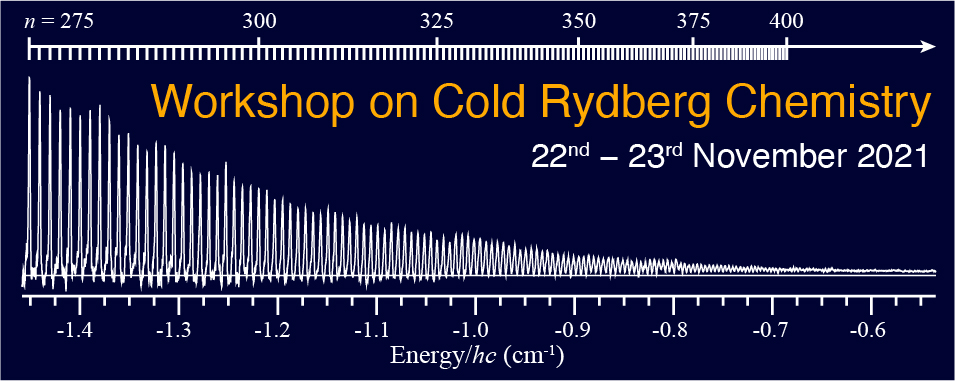Speaker
Description
Resonant mm-wave fields in the range from 50 to 100 GHz drive f ⟶ g transitions in a state-selected nf(2) Rydberg gas of NO. This transformation produces a clear signature in the selected field ionization (SFI) spectrum and dramatically increases the early time intensity of high-Rydberg resonances in the SFI-detected high-Rydberg spectrum. We associate these enhanced features with a decrease in the rate of predissociation owing to an increase in Rydberg orbital angular momentum. This same signature of early time Rydberg stabilization appears as an enhanced long-time plasma signal, extracted as a late peak after 20 µs of field-free evolution. We can conclude from these observations that avalanche alone does not guarantee a plasma state of arrested relaxation. But rather, the formation of an arrested phase requires both avalanche-produced nitric oxide ions and a persistent population of long-lived Rydberg molecules. A 250 ns 60 MHz radio frequency pulse with a peak-to-peak amplitude as low as 400 mV/cm, applied with zero delay similarly increases the signal of associated with a residue of lower-n Rydberg molecules detected microseconds later. Applied later to a plasma in a state of arrested relaxation, however, the same radiofrequency field depletes the residual Rydberg signal. We associate both effects with Rydberg electronic orbital angular momentum mixing. At early times the applied field mixes the photoselected nf state mixes with longer-lived states of high angular momentum. Later, electrons released by the radio frequency field collide with Rydberg molecules trapped in states of high angular momentum driving a predissociative flux through channels of low l.

